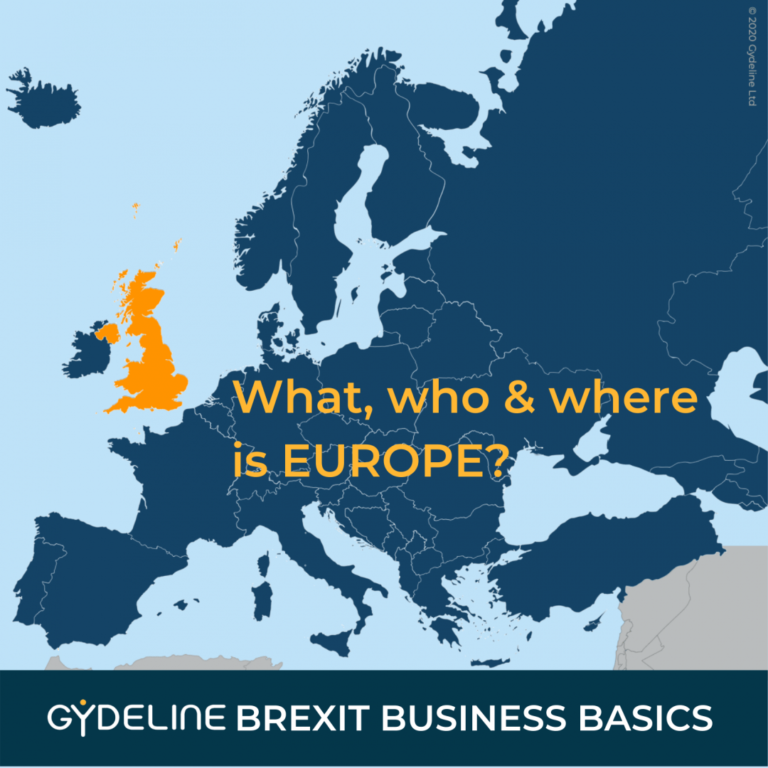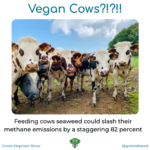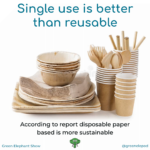EUROPE is used as a collective term in so many contexts, it’s a bit bewildering. Is it a continent, or a union of countries, an organisation or a council, an agreement or a parliament. Well, it’s all of them and the best way we thought to explain is mapping it out.
So if we’re going to use maps, let’s start with the land itself…

Europe - not really a continent!
Now, this may be a controversial opener, but before we get into the Brexit related bit of the article, we’d just like to discuss geography.
Europe is considered to be separated from Asia by the Ural and Caucasus Mountains, the Ural River, the Caspian and Black Seas and through the Turkish Straits. The term “continent” implies physical separation, but the land border is somewhat ‘loose’ and has changed several times. Therefore, Europe is really Western Eurasia, but that will not help explain the rest of this article.
The border between Europe and Asia does not follow any country boundaries. This vague dividing line crosses, Russia, Kazakhstan, Azerbaijan, Georgia and Turkey, making them transcontinental countries; so, we have included parts of them in the maps. However, France, Portugal, the Netherlands, Spain and the United Kingdom are also transcontinental because the main portion is in Europe while parts of their territory are located in other continents. Some of these territories, we haven’t included, thank heavens! Let’s just stick to the 51 main bits.
Europe - the Union (EU)
Well, let’s start with the biggy. The European Union, or EU, is the most commonly used term when describing what the UK is leaving, or Britain is exiting (BrExit) – in case you didn’t know!
The EU is a political and economic union of 28 member states that are located primarily in Europe (see geography lesson above). The European Economic Community (EEC) was founded in 1958 with the UK joining in 1973. The EU was formed out of the EEC in 1995.
There are seven countries somewhere in the process of applying to join the EU. The exercise tends to take between 5 and 15 years.
The EU is certainly at the heart of Brexit and consists of 7 principle decision making bodies, referred to as the ‘Institutions’, which have been the focus of much debate.
The European Union Institutions - what they do
Legislative body – With the Council of the European Union, the Parliament adopts or amends European legislation, usually proposed by the European Commission.
The Parliament is composed of 751 members called Member of the European Parliament (MEP), soon to become 705 once the UK exits.
Strategy and crisis management – The European Council defines the EU’s overall political direction and priorities.
It is made up of the heads of state or government of the EU member states, along with the Presidents of the European Council and the European Commission.
Legislative body – The Council of the EU adopts or amends European legislation, proposed by the European Commission, which has already been considered and amended by the European Parliament.
The membership of the Council of the EU changes depending on the topic being considered. Each of the 10 configurations which meet has a policy-appropriate national minister from each of the member states.
Executive body – The role of the European Commission includes:
- proposes new legislation to the Parliament and Council of the EU
- implements policies
- manages the budget
- ensures compliance
- negotiates international agreements
There is a ‘cabinet’ or ‘college’ of Commissioners, one for each member state but serving the EU first.
The workforce of the Commission is approximately 32,000 European Civil Servants organised into directorates, each with an area of expertise.
Judiciary – This EU institution oversees the consistent interpretation and application of EU law. The courts also resolve legal disputes raised by national governments, EU institutions, individuals, companies or organisations.
There are two major courts:
- The European Court of Justice which deals with applications from member state nation courts. It is made up of a judge from each member state and 11 advocates general.
- The General Court hears cases predominantly from individuals and organisations who claim to have had their rights infringed. Is has 56 judges.
Banking – The European Central Bank (ECB) manages the Euro (€) currency and sets the monetary policy for the 19 EU member states which have adopted it.
The banks capital is owned by the 28 national banks of the EU member states (as at 1/1/2020)
Financial Auditor – This so-called ‘Court’ of Auditors (ECA), is a professional external investigatory audit agency with the primary role of checking European finances. The ECA ensures if the EU budget is valid, funds have been spent legally and that transactions are well-managed.
The Court is made up of proven national auditors from each of the EU members states and supported by a staff of around 800.
In the event of finding a fault, the ECA inform European Anti-Fraud Office or OLAF (probably called after the snowman in Frozen!)
Europe - the Free Trade Area (EFTA)
This is a regional trade organization and free trade area consisting of Iceland, Liechtenstein, Norway, and Switzerland.
The organization operates alongside the European Union (EU), and the 4 states participate in the European Single Market, Common Transport Convention and are part of the Schengen Area. They are not, however, party to the European Union Customs Union.
Europe - the Single Market
Members of this open marketplace have agreed to the free movement of goods, capital, people and the establishment and provision of services, otherwise known as the ‘four freedoms’. This market is intended to improve competition, specialisation, economies of scale, movement of goods to the area where they are most valued and the efficient allocation of resources.
All of the EU members states are included and, with some exceptions, Iceland, Liechtenstein, Norway and Switzerland. There are also a number of agreements which allows limited participation for, around, 10 other European countries.
Europe - the Economic Area (EEA)
Established in 1992, the EEA is an international agreement which enables the extension of the EU’s single market to non-EU members. The stated purpose for the EEA is “promote a continuous and balanced strengthening of trade and economic relations”.
Along with 27 of the EU member states, 3 of the EFTA countries, Iceland, Liechtenstein and Norway, are members. Croatia is awaiting entry to the EEA club, being the newest member of the EU.
Europe - the EU Customs Union (EUCU)
The European Union Customs Union is a free trade area with a common tariff with countries outside the EUCU. It is one of the principle parts of the European Union as it facilitates the four freedoms mentioned above.
Although there is significant overlap with the Single Market, it’s a slightly different collection of countries. In the EUCU the EU member states are joined, through other customs agreements, by Andorra, Monaco, San Marino and Turkey.
Europe - the Transport Network
Firstly, the Common Transit Convention (CTC) enables exporting, importing and logistics companies to move goods quicker through member countries as customs declarations are not required at each border crossing.
Additionally, companies only pay customs duties when the goods reach their final destination and some customs procedures can be completed away from the border.
The EU members states are, again, the basis of this agreement, along with the EFTA countries, Turkey, North Macedonia and Serbia
Secondly, there is a quota scheme called the European Convention of the Ministers of Transport (ECMT) which is a set of rules to permit the transport of most types of goods or drive an empty vehicle through the member countries.
The core members are all the EU member states except Cyprus, along with Liechtenstein, Norway and Switzerland. The membership extends to include 13 other countries being, Albania, Armenia, Azerbaijan, Belarus, Bosnia and Herzegovina, Georgia, North Macedonia, Moldova, Montenegro, Russia, Serbia, Turkey, and Ukraine.
The ECMT evolved into the far larger International Transport Forum (ITF) but the European transport permit system is still applicable, being referred to as the Multilateral Quota. The ITF membership is truly intercontinental, including Australia, Japan, United Arab Emirates and the USA, to name a few.
EURO - the Currency (€)
Well, this one is quite easy. OK, it’s not “Europe” but it is an aspect of the European landscape so it deserves a mention.
The Euro is the primary currency of 25 countries, 19 of which are EU Member states. Although having only become a currency in 1999, it is now the second most traded currency in the world, behind the US Dollar.
All but two of the remaining EU members are bound to join the Euro and all new entrants must adopt it. Add to that the 22 countries and territories which have ‘pegged’ their currency to the Euro, is it only going to become more prevalent.
Europe - the Borderless Travel Destination
There an area named after the 1985 Schengen Agreement which is made up of 22 EU member states and the 4 countries in the EFTA. that have officially abolished all passport and all other types of border control at their mutual borders.
4 of the remaining EU members states, namely Bulgaria, Croatia, Cyprus, and Romania are legally bound to join in the future. Ireland and the UK have always opted out of the are agreement.
Europe - the Song Contest
Ah, now this one is important… well it is to the 180 million estimated viewers each year.
Eurovision is an annual European song contest which has been around for longer than the EU. Each country submits an original song to be performed at a live broadcast show. Each country then casts votes for the other countries’ songs to determine the winner. The winning country gets to foot the bill for hosting the following years’ competition.
The UK has competed in all but 1 of the finals, winning 5 times out of 62. However, the UK entry has not taken the top spot since 1997. Perhaps we might get some pity votes this year, as that seems to be a thing!
Now with over 40 countries, some of which are not European in any way, there are semi-finals leading up to the Grand Final which, this year is hosted in Rotterdam on the 16 May 2020.
















